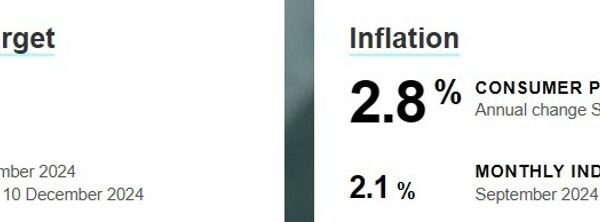
President Donald Trump’s hike in tariffs is projected to generate enough revenue to cut federal deficits by $4 trillion over the next decade, according to the latest analysis by the Congressional Budget Office (CBO). The nonpartisan agency said it had updated its estimates of tariff revenues as part of the development of the short-term economic forecast covering 2025 to 2028, to be published on September 12.
The CBO report found that increased tariffs—many targeting imports from China, Mexico, Canada, and the European Union as well as automobiles, steel, and other goods—have raised effective tariff rates by about 18 percentage points compared to last year. If these rates remain, primary deficits would shrink by $3.3 trillion and interest payments would fall by another $700 billion, bringing the total deficit reduction to $4 trillion over 10 years.
Impact of tariffs on deficit
Higher tariff revenues mean less need for federal borrowing, resulting in significant savings on national debt interest payments. This marks a substantial revision from the CBO’s June estimates following recent hikes in tariff rates and broader coverage across key imports, when the agency projected a $2.5 trillion decrease in primary deficits and $500 billion reduction in interest outlays in a report that examined the effects of the tariffs implemented between January 6 and May 13, 2025. The CBO said it used the same methods to generate the projections, mainly based on data from the Census Bureau, Customs and Border Protection, and the Treasury.
The study notes that tariff revenue could partially offset deficits caused by new tax cuts and spending bills, such as the “One Big Beautiful Bill Act,” which is expected to raise deficits by $3.4 trillion, also according to the CBO. However, legal challenges and evolving trade negotiations may impact future tariff-related revenues, the CBO cautioned.
Wider economic context
The federal debt currently stands at about $37 trillion, and analysts remain concerned about upward pressures on interest rates and borrowing costs due to rising debt levels. Lawmakers are also facing a government funding deadline at the end of September, which places added scrutiny on deficit management in upcoming fiscal debates.
Separately, the Committee for a Responsible Federal Budget (CRFB), a nonpartisan budget watchdog that sits outside the government, has calculated that Trump’s tariff regime, if kept permanent, could reduce the deficit by up to $2.8 trillion in the next decade. The CRFB called the revenue being generated by the tariffs both “meaningful” and “significant.”
It’s an open question whether the tariffs will offset the impact of OBBBA, from a deficit standpoint. The CRFB has gamed out several scenarios—including the bulk of the tariffs being ruled illegal and thrown out by an appeals court—and warned that the nation’s finances have “deteriorated” since January. In June, the CRFB also warned that the tariffs wouldn’t cover the costs of OBBBA, however the CBO’s significant upgrade of deficit reduction calls that calculation into question. Still, there is the question of who “eats” the tariffs, to paraphrase Trump’s famous instructions to Walmart about its margins. As many economists have noted, the tariffs essentially function as a sales tax on American consumers, so the deficit reduction is coming from, more or less, you and me.
While Trump and supporters frame tariffs as a key tool for deficit reduction without raising taxes on U.S. households, critics caution about broader economic impacts, including higher consumer prices and trade tensions. The CBO indicates its projections assume ongoing tariff regimes, noting that changes in trade policy or international negotiations could alter the fiscal outlook.
For this story, Fortune used generative AI to help with an initial draft. An editor verified the accuracy of the information before publishing.















